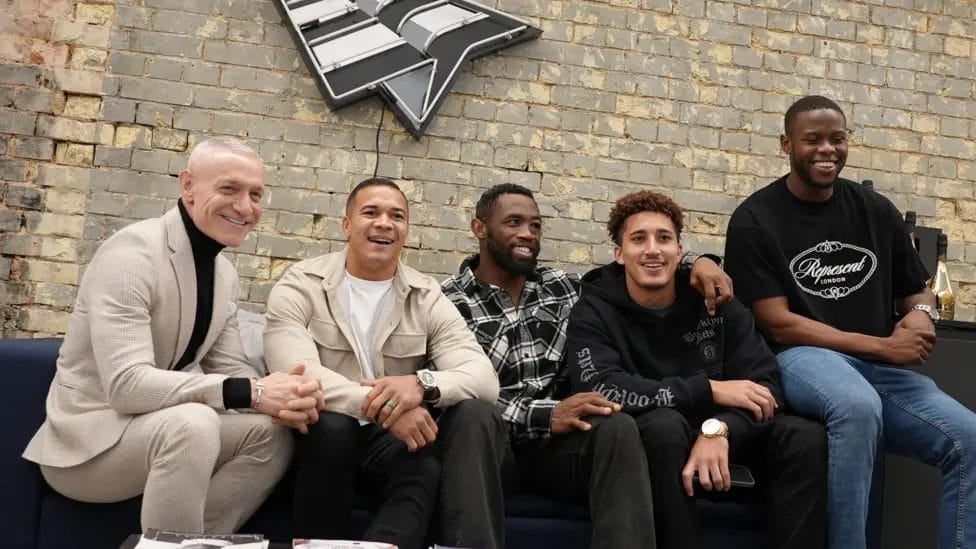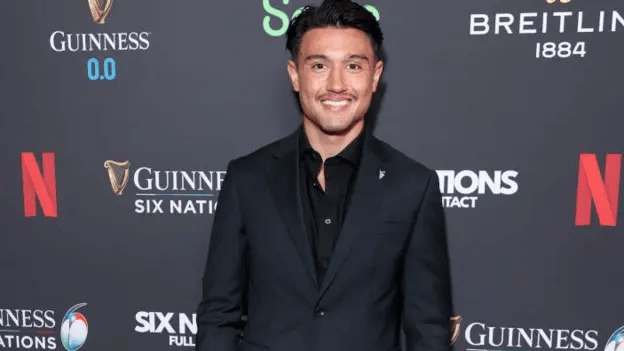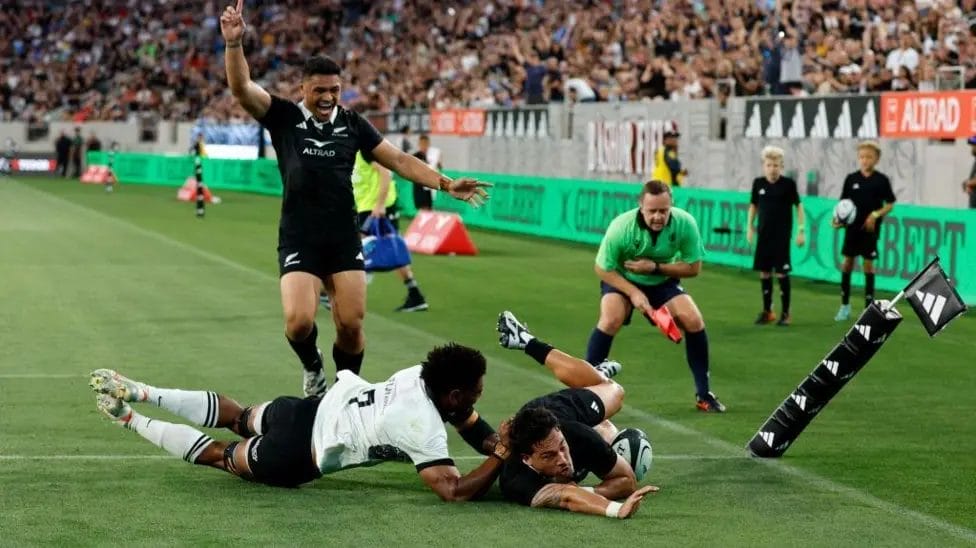
Rugby has long been a niche sport in the United States, with a passionate but relatively small fan base. Despite having a history in the country that stretches back over 150 years, rugby in America has struggled to gain the mainstream appeal that other sports like American football, basketball, and baseball enjoy. However, experts believe that the key to making rugby a more prominent fixture in the U.S. sports landscape lies in one critical element: star power.
Leading the charge in this effort is Roc Nation Sports, a prominent entertainment and sports agency, which has begun to shift its focus toward rugby. The agency, known for representing global superstars like Rihanna, Alicia Keys, and athletes such as NBA legend Kevin Durant, sees a major opportunity for the sport to break through in America—if it can learn to harness the power of its most recognizable players. Michael Yormark, president of Roc Nation Sports International, has made it clear that rugby must follow the example set by other American sports leagues to truly reach the next level of growth and commercial success.
Why Rugby in America Needs Star Power
The importance of star power in American sports cannot be overstated. The popularity of sports like the NBA and NFL is, in part, due to the larger-than-life personalities of their athletes. From Michael Jordan to LeBron James, and from Tom Brady to Patrick Mahomes, star athletes are central to the narrative and branding of these leagues. This is something that rugby, with its traditional focus on teamwork and modesty, has historically shied away from. However, if rugby in America is ever to find the mass appeal that it seeks, it will need to embrace a shift in mindset toward promoting individual stars as much as, if not more than, the team itself.
Yormark, who oversees Roc Nation’s global sports endeavors, acknowledges that rugby has “so much potential” in the U.S. market, but stresses that in order to unlock this potential, rugby needs to rethink its approach. “Why are the NBA and NFL so popular?” Yormark asks. “Star power. Rugby needs to learn from those examples.”
In fact, the world of sport in America has already seen how star players can drastically elevate a league. Take, for example, Major League Soccer (MLS). The league had been struggling to gain traction in the U.S. until Argentine superstar Lionel Messi joined Inter Miami in 2023. Messi’s arrival brought instant international attention to MLS, attracting new fans and increasing the visibility of the sport. In Yormark’s view, rugby must find its equivalent of Messi—someone who can capture the public’s imagination and lead the way for future stars.
Roc Nation’s Role in Rugby’s American Push

Roc Nation’s involvement in rugby is a relatively recent development. The agency first ventured into the sport in 2019, after being inspired by the impact of South African rugby captain Siya Kolisi’s success at the 2019 Rugby World Cup. Kolisi’s personal story—rising from humble beginnings in a South African township to lead his country to a World Cup victory—captivated many, including Yormark. Seeing an opportunity to harness Kolisi’s star power, Roc Nation signed the rugby player to its roster. The agency has since expanded its rugby portfolio, adding players like Kolisi’s teammate Cheslin Kolbe, New Zealand’s Ardie Savea, and England’s Maro Itoje, among others.
These players, with their global appeal, are viewed by Roc Nation as the types of stars who could help promote rugby in America and change the sport’s standing in the U.S. Yormark notes that these athletes have far more to offer than just their sporting ability; they represent stories, cultures, and personalities that could resonate with American audiences. In a similar vein to how NBA and NFL stars have capitalized on their off-field presence, rugby players need to build their personal brands and connect with the broader public.
For example, Kolisi has already spent time with NBA stars like Kevin Durant, and Itoje has formed relationships with figures like music producer DJ Khaled. These high-profile connections serve to elevate the athletes’ profiles, both within rugby and beyond, which is crucial for growing the sport’s footprint in the U.S.
The Cultural Shift Within Rugby

However, convincing rugby players to embrace the role of celebrity in the way American sports stars do has been a challenge. Rugby’s ingrained culture emphasizes humility and teamwork, often at the expense of individual recognition. This has created a reluctance among some players to promote themselves aggressively.
As Paul Adesoye, Roc Nation’s head of rugby, points out, “Over here the guys are a little bit more reticent about doing it.” The fear of backlash from teammates and clubs is significant, and it’s this reluctance to promote individual achievements that has slowed the shift in mindset. However, Adesoye sees change on the horizon. He notes that players like England’s Danny Care are already experimenting with personal media projects, such as launching a vlog and podcast. While Care is in the later stages of his career, his efforts are part of a broader trend toward self-promotion in rugby.
“The way it is in the United States—current NBA players doing podcasts during the season, telling their story first-hand—is something rugby could embrace as well,” Adesoye says. “It is a matter of time.”
For rugby in America to truly take off, these cultural shifts must happen sooner rather than later. Players need to be given the tools and encouragement to develop their own brands, share their stories, and engage with fans off the pitch. This will help rugby stand out in a crowded U.S. sports market, where sports fans are bombarded with entertainment choices every day.
The Path Forward for Rugby in America

Major League Rugby (MLR), the professional rugby competition in the U.S., has made steady progress since its inception in 2017. With teams in 12 markets across the country, MLR’s attendance has steadily increased, and the league is becoming an increasingly relevant part of the U.S. sports ecosystem.
However, MLR is only part of the equation. World Rugby has ambitious plans to increase rugby’s profile in the U.S., with the country set to host the 2031 and 2033 Rugby World Cups. These tournaments are expected to provide a massive boost to the sport’s popularity, especially in a country that has never hosted a Rugby World Cup. Furthermore, the 2028 Los Angeles Olympics will feature rugby sevens, providing another opportunity to showcase the sport to a massive American audience.
World Rugby estimates that capturing just 1% of the U.S. sports rights market could double rugby’s global revenues. This makes it even more critical for the sport to embrace star power and create the right conditions for players to thrive both on and off the field.
As Yormark emphasizes, “It really needs to create an identity and a story in order to break through. There is no quick fix, but I think they have the opportunity to do it.” The next few years will be crucial for rugby in America, and if the sport can leverage its emerging stars, increase its visibility, and embrace a more American-style approach to promotion, it could finally break through in the U.S. market.
The Future of Rugby in the U.S.
Rugby in America is on the cusp of something significant. With increased efforts from agencies like Roc Nation, the rise of Major League Rugby, and the prospect of major international tournaments in the near future, rugby has a genuine opportunity to carve out a place for itself in the crowded U.S. sports market. However, to truly succeed, rugby must take a page out of the NBA and NFL playbooks by developing and promoting star players who can help elevate the sport’s profile.
The journey ahead won’t be easy, but the groundwork is already being laid. If rugby can embrace the power of its athletes and adapt its strategies to the American sports landscape, it may soon find itself on a path to long-term success in the United States.








